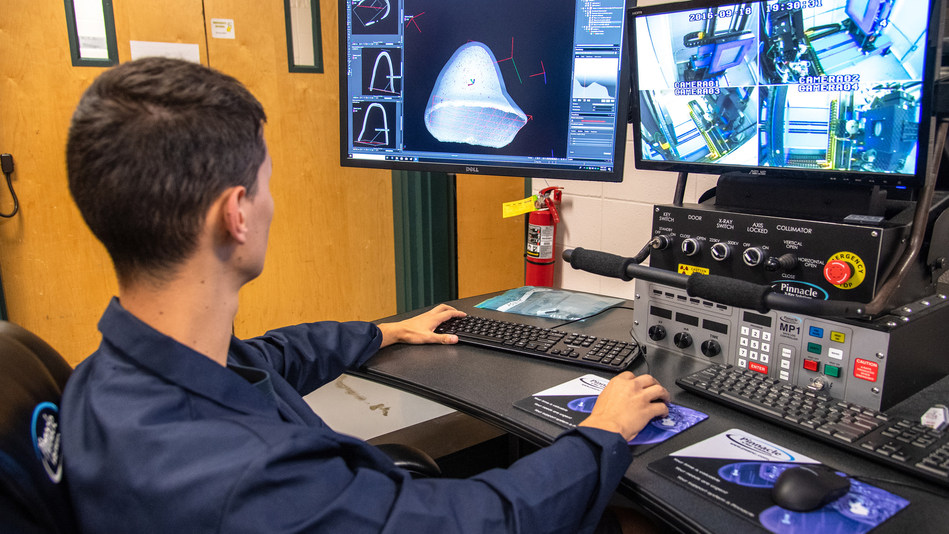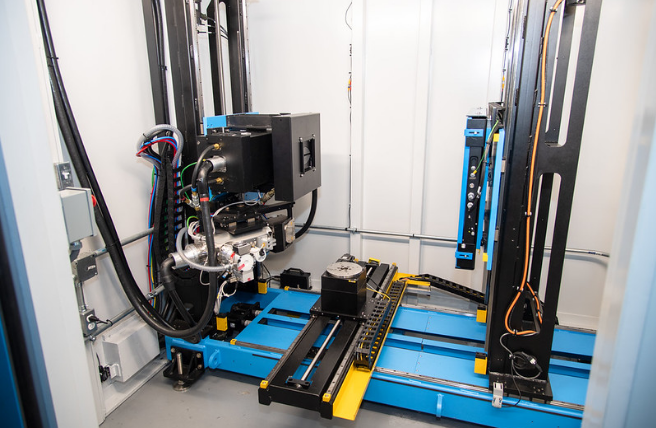The Auburn Center for Additive Manufacturing, founded in 2015, received another boost recently with the addition of a customized digital radiology vault and specialized additive manufacturing systems, all created by researchers at Auburn University via a $1.5 million grant from the National Institute of Standards and Technology (NIST). With this addition, Auburn’s Samuel Ginn College of Engineering, an institution consistently ranking among the top engineering institutions in the country, is now able to inspect AM parts through 3D non-destructive interrogation of ‘mission-critical’ metal parts; not only that, but they are also able to monitor processes in real time—ultimately, assessing quality throughout production and confirming internal dimensions of each structure.
 Collaborating with the University, NIST, NASA, and ASTM International, Auburn’s Center for Additive Manufacturing offers the following:
Collaborating with the University, NIST, NASA, and ASTM International, Auburn’s Center for Additive Manufacturing offers the following:
- Innovative research
- Training and education for undergraduate and graduate students
- Development of technology advancing the AM industry
As professor of materials engineering and principal investigator for the NIST grant, Bart Prorok explains that with the new system, the engineering team is able to offer ‘precise design interrogation capabilities’ not possible before—a common benefit of 3D printing and additive manufacturing, and especially when more complex geometries are involved.
“The grant enabled us to purchase this unit and begin to provide metrology and other information that NIST can use in their standardization efforts as well as support our standardization efforts in our AM effort here at Auburn,” Prorok said. “It’s important because we can identify defects made during the fabrication process and we can confirm internal dimensions and structures and quality of what we build overall without destroying it.
“It’s a real game-changer because while we’re building a component with additive, it’s difficult to monitor what’s happening,” Prorok continued. “With this new system, we can take two-dimensional X-ray pictures of a metal structure for real-time process monitoring or a series of 2D images in 360 degrees of rotation that are then reconstructed into a 3D representation of the build.”

An Auburn University researcher studies a 3D rendering of scans produced by a state-of-the-art $1.5 million X-Ray CT system recently acquired through a grant from the National Institute of Standards and Technology.
Current collaborations with industry leaders like NASA, NIST, the U.S. Army, and ASTM International (along with other well-established organizations in both aerospace and aviation) continue to stimulate research at Auburn, to include a recent grant from NASA of $5.2 million to allow them to continue researching and developing AM processes further, but also techniques in the fabrication of liquid rocket engines.
While many different colleges and universities around the world focus on partnerships to propel digital fabrication and technology further, Auburn has been the recipient of research agreements with NASA, formal partnerships with standards organization ASTM International, and more. What do you think of this news? Let us know your thoughts! Join the discussion of this and other 3D printing topics at 3DPrintBoard.com.
[Source / Images: Auburn University; Cision]Subscribe to Our Email Newsletter
Stay up-to-date on all the latest news from the 3D printing industry and receive information and offers from third party vendors.
You May Also Like
3D Printing Webinar and Event Roundup: May 5, 2024
We’ve got a busy week of 3D printing events ahead of us, in Texas, Florida, Washington, D.C., Shanghai, and more. Webinar offerings will cover medical models, PolyJet 3D printing, additive...
High Stakes, High Speed: KVG Acquires 15 Nexa3D HSE 3D Printers to Boost Military Tech
As 3D printing increasingly intersects with defense and military logistics, a new partnership between Nexa3D and mission support logistics firm KVG stresses the growing importance of this technology in strategic...
Construction 3D Printing CEO Reflects on Being Female in Construction
Natalie Wadley, CEO of ChangeMaker3D, could hear the words of her daughter sitting next to her resounding in her head. “Mum, MUM, you’ve won!” Wadley had just won the prestigious...
3D Printing News Briefs, February 17, 2024: Shot Blasting, Service Bureaus, & More
In today’s 3D Printing News Briefs, we’re starting out with post-processing, as SKZ Würzburg is using a shot blast system from AM Solutions for its research. Moving on to business,...
































